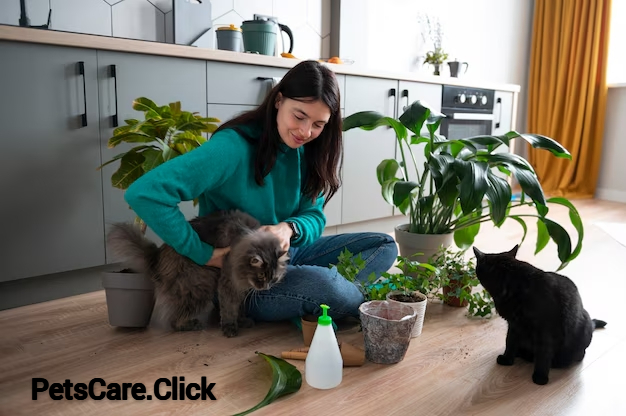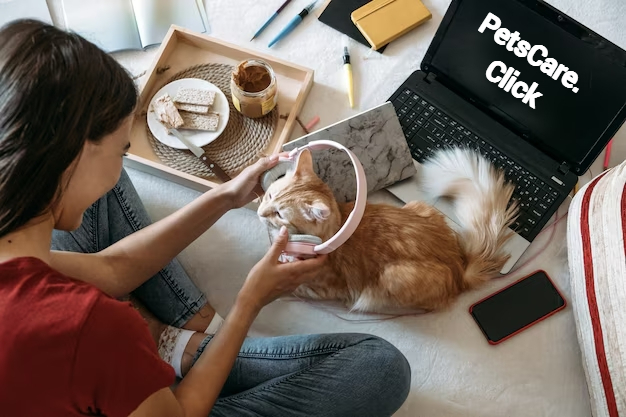Cats are naturally curious and independent creatures, but they also have unique needs for their well-being, especially when living indoors. Creating the perfect indoor environment for cats is essential not only for their physical comfort but also for their emotional and mental well-being. In this article, we will explore how to build a cat-friendly space, incorporating safety, enrichment, and comfort, to ensure your feline friend thrives in an indoor setting.
Why Creating a Safe and Stimulating Indoor Environment is Important for Cats
Indoor cats rely entirely on their owners for everything from food to entertainment, and their physical and emotional needs must be met in creative ways. A well-designed indoor space prevents boredom, reduces stress, and even helps prevent behavior issues such as scratching furniture or excessive meowing. Moreover, an ideal indoor environment ensures your cat stays safe from outdoor hazards such as traffic, predators, and disease.
Creating a stimulating environment that caters to their instinctual behaviors is a great way to maintain a cat’s health, reduce anxiety, and keep them entertained.
1. Ensure Proper Space for Exploration and Play
Cats are natural explorers. Whether they’re seeking out new scents or simply moving around, it’s important to provide them with ample space. Your indoor environment should have a balance between open spaces for lounging and places for climbing and exploring.
Cat Furniture: Investing in cat trees or multi-level cat condos will not only offer your cat the chance to climb and scratch but will also give them a sense of security. Cats love vertical space, and having high vantage points can make them feel safer as they observe their surroundings. These structures also offer places to hide or sleep, which are essential for a cat’s mental health.
Interactive Play Zones: Cats stimulation, and it’s important to provide areas where they can express their natural predatory instincts.. Intuitive toys, like plume wands, laser pointers, or puzzle feeders, energize development and mental commitment. Pivot toys consistently to keep things new and forestall fatigue. Additionally, creating a play area with tunnels, cardboard boxes, or a paper bag can mimic the thrill of hunting.
2. Incorporate Scratching Posts and Climbing Options
Scratching is a characteristic and fundamental way of behaving for felines. Not only does it help them sharpen their claws, but it also provides them with an outlet for stress relief. If you don’t want your furniture scratched, you’ll need to provide alternatives.
Scratching Posts: Ensure that you have enough scratching posts around your home, especially in areas where your cat loves to scratch. Choose posts made from materials such as sisal or carpet, which are more likely to appeal to your cat’s scratching instinct. Consider placing them near spots your cat frequently visits, like their favorite lounging areas or in front of windows where they can watch outside activity.
Climbing and Hiding Spots: Along with scratching posts, providing horizontal and vertical spaces for climbing is equally important. Cats love high places because they make them feel secure. Shelves, windowsills, or even a designated cat jungle gym will help your cat feel more comfortable and entertained. Additionally, hiding spots where your cat can retreat for privacy are essential.
3. Offer Comfortable Resting Areas and Sleep Spaces
Cats spend a significant portion of their day sleeping, and providing a comfortable, quiet spot for them to rest is crucial. Indoor felines need their own “safe-haven” away from the hurrying around of regular day to day existence.
Comfy Beds and Blankets: Invest in soft, plush beds that fit your cat’s personality and sleeping style. Some cats prefer high, enclosed spaces like cat caves, while others prefer open beds where they can sprawl out. Place beds in different locations around the house—cats love to change their sleeping spots depending on the time of day and the level of activity in the home.
Temperature and Light Considerations: Ensure that your cat’s resting areas are not exposed to extreme temperatures. Cats love warmth, so placing their bed near a window with sunlight can be a perfect resting place. However, make sure that there’s always a cool, shaded area for them to retreat to during hot weather.
4. Provide Fresh Water and High-Quality Food
Proper hydration and nutrition are fundamental for maintaining a cat’s health. Cats are obligate carnivores, meaning they require a protein-rich diet, and they also need regular access to fresh water.
Water Sources: A clean water source is essential. Some cats prefer drinking from a running stream, so investing in a cat water fountain can be a great way to encourage hydration. Always clean the water dish daily to avoid contamination.
Food and Treats: Offer high-quality cat food that meets your cat’s specific nutritional needs, whether they are kittens, adults, or seniors. If your cat has any specific health concerns, consult with your vet to choose the best diet. Ensure that your cat’s food is balanced and avoid offering excessive amounts of treats. Keeping your cat’s weight in check is important to prevent obesity and related health problems.
5. Environmental Enrichment: Keep Your Cat Mentally Stimulated

A mentally stimulated cat is a happy cat. Providing a variety of enrichment activities will help keep your cat’s mind sharp and their stress levels low. This can include puzzle feeders, new toys, or even cat-safe plants.
Interactive Feeders and Puzzle Toys: Puzzle feeders urge your feline to work for their food, reproducing the most common way of hunting. This can help prevent overeating, promote natural behaviors, and reduce boredom. There are a variety of puzzle toys available, from treat-dispensing balls to complex interactive feeders.
Outdoor Viewing Perches: If possible, create a cat-friendly outdoor space or install a “catio” (a cat patio) where your cat can safely observe the world outside. This satisfies their natural curiosity and gives them an opportunity to watch birds, squirrels, and other outdoor creatures. A simple window perch or cat-safe balcony can provide hours of entertainment.
6. Litter Boxes and Hygiene
Keeping a perfect litter box is fundamental for your feline’s wellbeing and solace. Cats are highly sensitive to cleanliness, and a dirty litter box can lead to stress and behavioral issues.
Litter Box Placement: Place the litter enclose a calm, confidential region, away from your feline’s food and water dishes. Cats prefer easy access, so make sure the box is in a location they can easily reach. If you have multiple cats, you should provide one litter box per cat, plus one extra.
Regular Cleaning: Clean the litter box regularly, scooping out waste at least once a day and changing the litter weekly. Keep the box dry and odor-free by using a high-quality clumping litter. Consider trying a self-cleaning litter box for added convenience and cleanliness.
Conclusion
Creating the perfect indoor environment for cats involves more than just providing food and shelter; it’s about ensuring their overall well-being and happiness. By providing ample space for exploration, interactive play, comfortable rest areas, and mental stimulation, you can offer your feline companion the best possible indoor life.
When building an indoor environment for your cat, consider their natural instincts and needs. With careful attention to their comfort, safety, and entertainment, you’ll create a space where your cat can thrive and enjoy a fulfilling, stress-free life.
